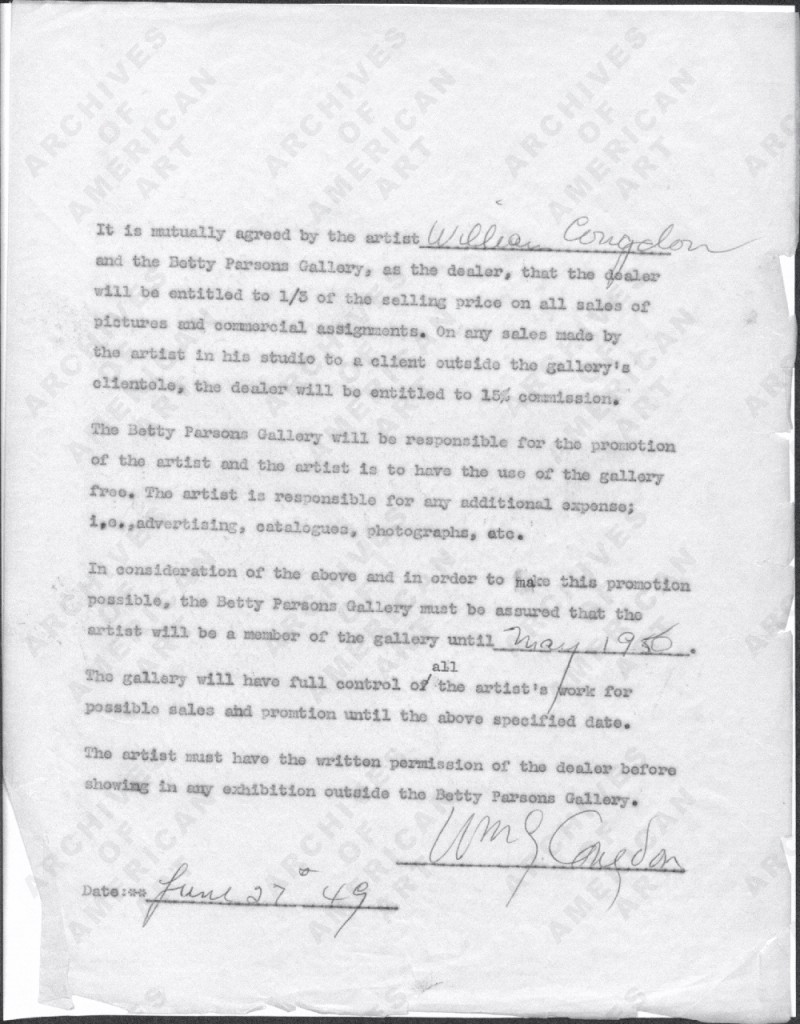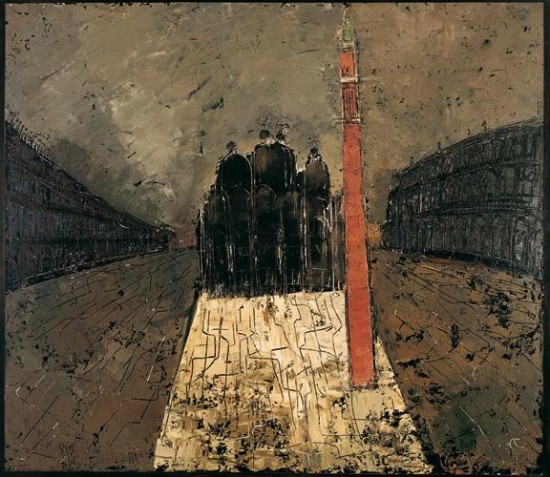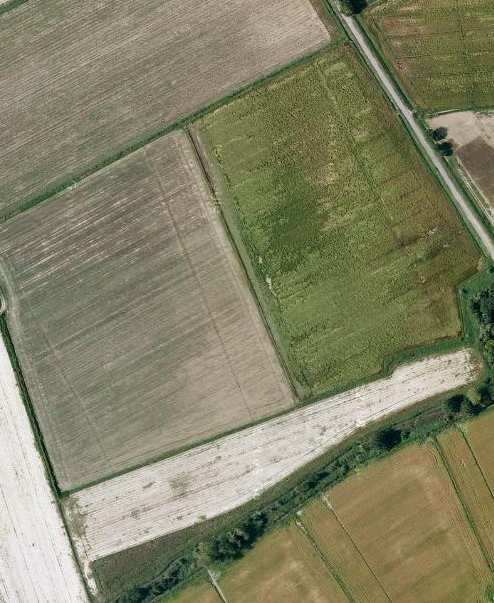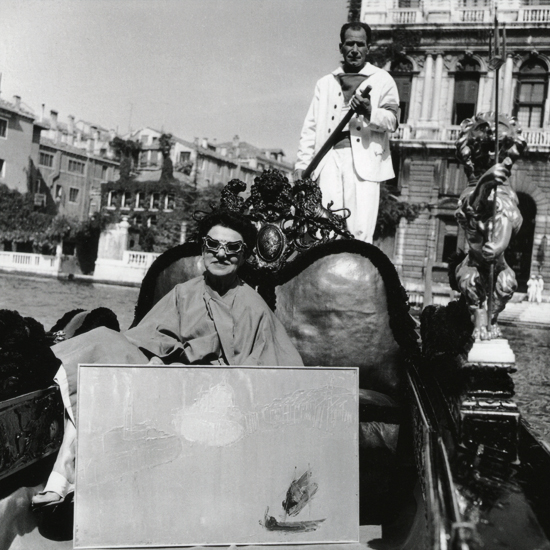
Ho visto la mostra “William Congdon a Venezia. Uno sguardo americano” a Ca’ Foscari a Venezia. È la prima mostra che la città dedica al pittore americano che la fece oggetto di una lunga serie di bellissime opere. Ne ho scritto qui. La mostra è interessante anche se non priva di difetti. Certamente andava fatta, come chiedevamo qualche mese fa qui.
I pregi di questa mostra sono almeno due, secondo me. Il primo è la scelta di concentrarsi solo sul periodo veneziano e sulle opere che raffigurano la Serenissima. Questo permette di porre attenzione a un periodo importante sia per Congdon sia per Venezia. Interessante il saggio in catalogo di Elena Scantamburlo “William Congdon alla BIîennale (1952-1958)” che ricostruisce il rapporto tra il pittore americano e la manifestazione (portò un’opera per edizione di soggetto romano). Angela Bianco, invece, cerca di sciogliere un piccolo giallo. Nel suo saggio Dai guest books di Peggy Guggenheim un inedito disegno di William Congdon e una mostra fantasma. La mostra fantasma è quella che Congdon dice di aver fatto da Peggy Guggenheim. Il pittore, infatti, riferisce nei suoi taccuini di uno “show” a casa della collezionista del quale, però, sembrano non esserci riscontri storici. La conclusione della Bianco è che con buona probabilità di trattò di un’esposizione privata non aperta al pubblico ma destinata agli amici di Peggy.
L’altro pregio è che, probabilmente per la mancanza delle grandi opere provenienti dai musei americani, i curatori si sono dovuti rimboccare le maniche per reperire opere dalle collezioni private di cui si sa molto poco. Il risultato è che in mostra ci sono tre opere inedite, di cui una è una scoperta. È quella qui sotto: è un dipinto ad olio su cartoncino non datato e non firmato. Ad un primo momento non sembra un pezzo di grande valore, ma a guardarlo meglio, si nota quel bellissimo cielo che ci proietta nel mondo fatto di spatolate dell’ultimo Congdon.
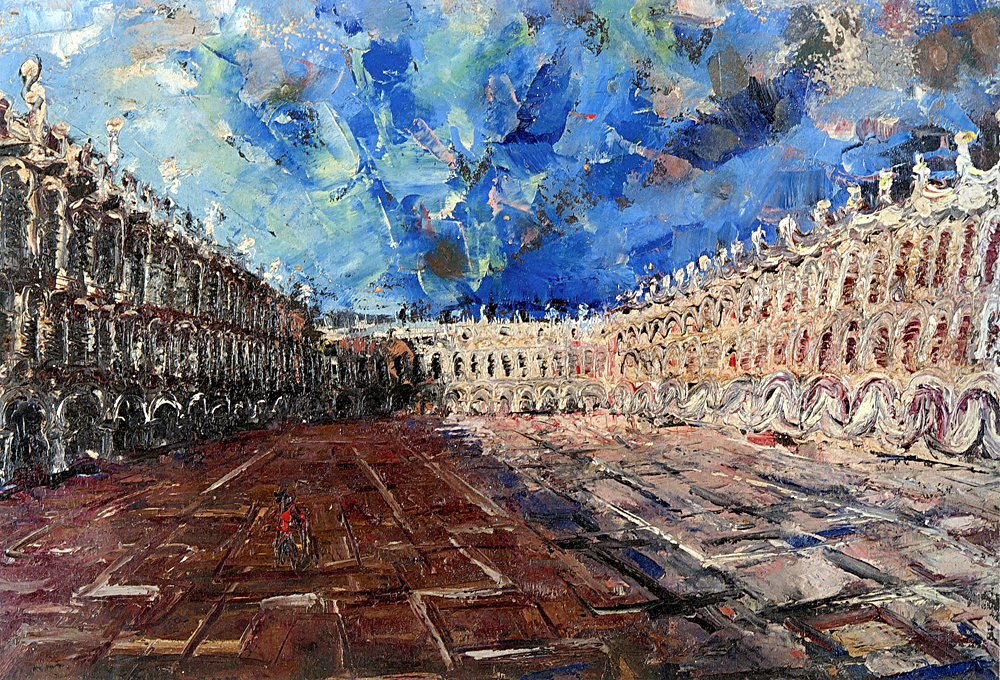

I saw the show “William Congdon a Venice. Uno sguardo americano” at Ca’ Foscari. It is the first exhibition in the city devoted to the American painter who lived there and painted a long series of beautiful paintings of Venice. The exhibition is interesting, albeit not without flaws. Certainly should have been done, as I asked a few months ago here.
The merits of this exhibition, curated by Giuseppe Barbieri and Silvia Burini, are at least two, in my opinion. The first is the choice of focusing exclusively on Venetian period and the works that depict the Serenissima. This allows you to pay attention to an important period for both Venice and Congdon. In particular, I find it interesting, in the catalog, the essay by Elena Scantamburlo “William Congdon Biennale (1952-1958)”, which reconstructs the relationship between the American painter and event (he brought one painting of Roman subject for each edition) and seeks to dissolve a small mistery novel. It is “ghost exibition” by Congdon chez Peggy Guggenheim. The painter, in fact, refers in his notebooks about a “show” in home of the collector, of which, however, seem to be no historical evidence. Scantaburlo’s conclusion is that the “show” was in reality a private exibition intended for Peggy’s friends.
The other merit is that, probably because of the lack of major works from American museums, the curators have had to work hard to retrieve paintings from private collections, of which very little is known. The result is that in shows there are three works never exibited, one of which is a discovery. It is the one below: it is an oil painting on cardboard, undated and unsigned. At first it did not seem a very valuable piece, but a better look, you see that beautiful sky that propels us into the world of the last Congdon.

